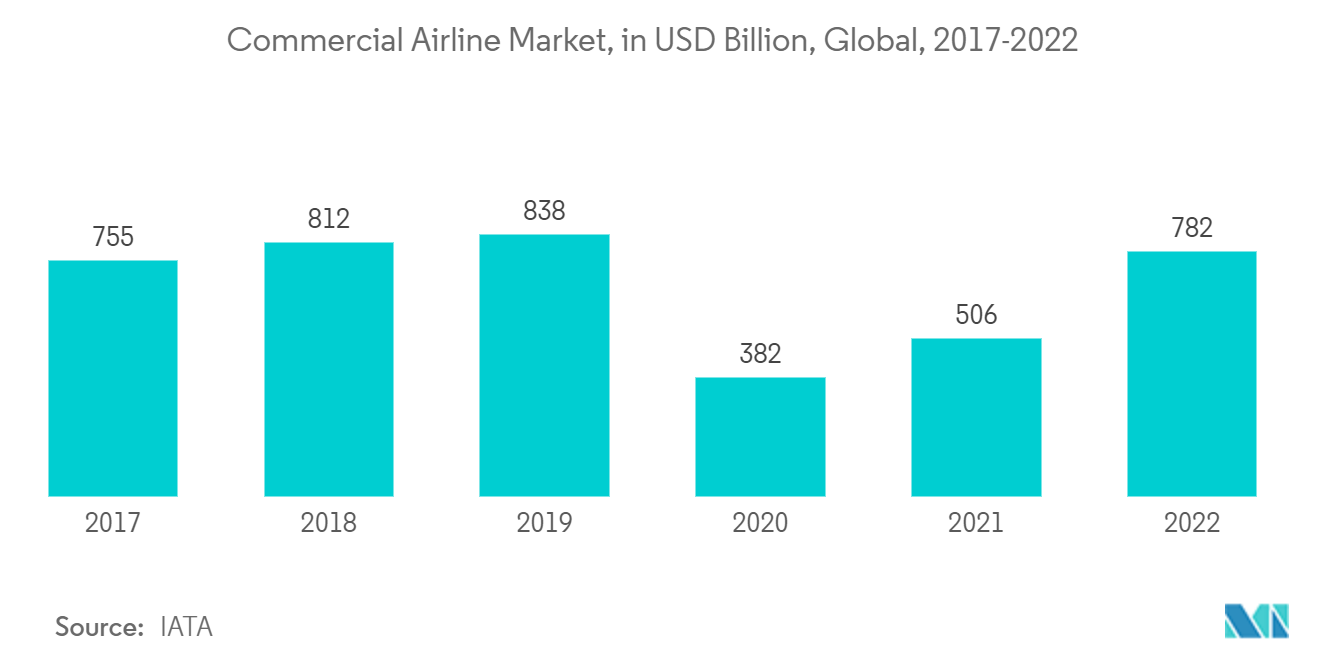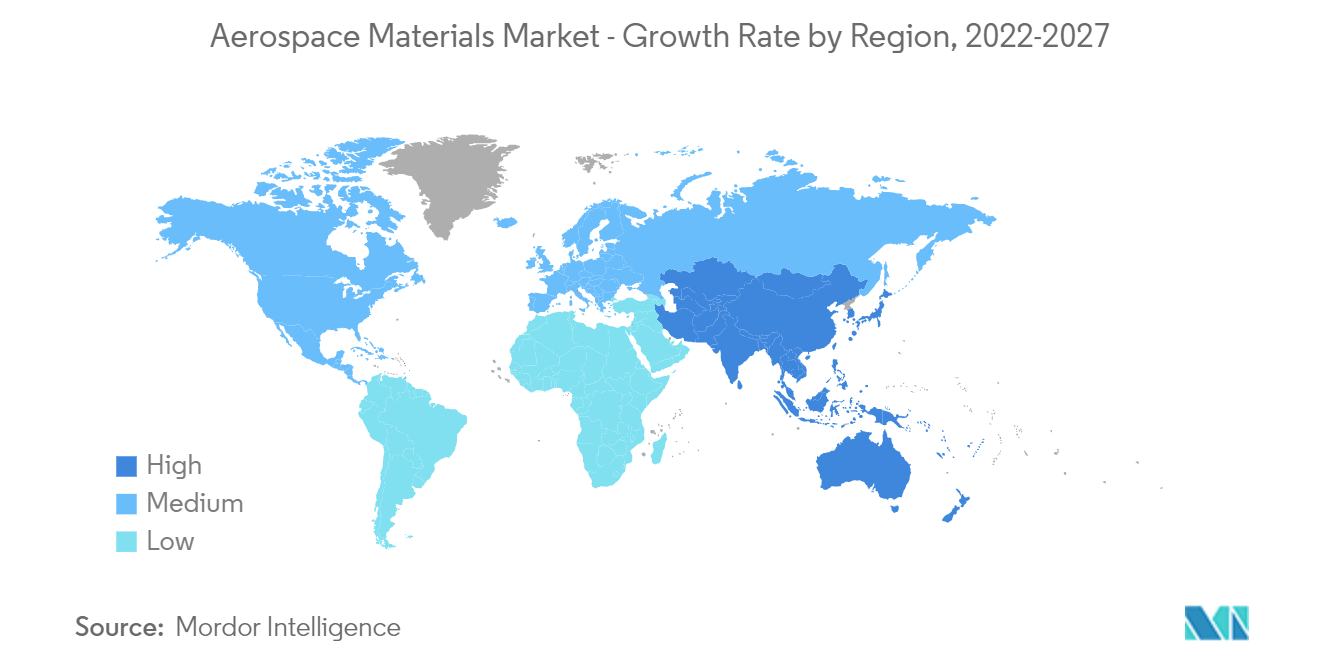Market Trends of Aerospace Materials Industry
This section covers the major market trends shaping the Aerospace Materials Market according to our research experts:
Increasing Demand for General and Commercial Aircraft
- General and commercial aircraft are used for various purposes, including civil aviation (both private and commercial) and passenger and freight transportation.
- The aerospace industry is experiencing stagnant growth owing to the strengthening of passenger travel demand. The backlog of new aircraft orders and the constant resurgence of business aircraft may further add to the growth of the aerospace industry.
- There has been an increase in demand for private travel as the number of high-net-worth persons, and ultra-high-net-worth individuals have increased globally, resulting in the procurement of helicopters and business jets with improved cabin interiors.
- According to IATA (International Air Transport Association), the annual growth of global air traffic in 2020 during Covid declined by approximately 66%. For 2021, the growth rate was positive and stood around 18%, while 2022 forecasts project a 51% growth rate compared to the previous year.
- The United States has the largest aerospace industry in the world. According to the Federal Aviation Administration (FAA), the number of aircraft in the country's commercial fleet accounted for 5,882 in 2020, witnessing a decline rate of 22.9% compared to 7,628 units in 2019. Moreover, the commercial fleet is forecast to increase to 8,756 in 2041, with an average annual growth rate of 2% per year. Furthermore, the total United States mainline air carrier accounted for 3,181 aircraft in 2020, registering a decline rate of around 27.5%, compared to 4,388 units in 2019, and it is expected to reach 5,101 aircraft in 2041.
- As per IBEF (India Brand Equity Foundation) and IATA forecasts, India's aviation market is expected to be the world's third-largest by 2024. The aviation sector has witnessed various investments and developments in 2021. For instance, in October 2021, Tata Sons won the bid to acquire state-run Air India by offering INR 18,000 crore (or USD 2.4 billion) to acquire 100% shares of the airline company.

North America to Dominate the Market
- The North American region is expected to dominate the market due to increasing demand from countries such as the United States and Canada.
- The United States has the largest aviation market in North America and one of the world's largest fleet sizes. Strong exports of aerospace components to countries, such as France, China, and Germany, along with robust consumer spending in the United States, have been driving the manufacturing activities in the aerospace industry, which is expected to induce a positive momentum for the aerospace material market in the country.
- In the 2022 defense budget, the United States government allowed USD 768.2 billion for national defense programs, which is about a 2% increase from the Biden administration's original budget request, registering a growing usage of aerospace materials in the sector.
- Moreover, contracts and agreements in the industry are provoking the manufacturing activities for commercial and defense aircraft. For instance, in August 2022, the Boeing Company was awarded a modification (P00215) to contract for KC-46A Air Force Production Lot 8 aircraft, subscriptions, and licenses. This includes an additional quantity of 15 KC-46A aircraft. The contract involves 100% Foreign Military Sales to Israel in the amount of USD 886,242,124.
- According to the Aerospace Industries Association of Canada (AIAC), the aerospace sector generates CAD 31 billion (USD 23 billion) in annual revenue. Approximately 80% of Canada's aerospace sector is civil-oriented, and 20% is military-oriented.
- Montréal is the world's third-largest aerospace hub after Seattle, Washington, and Toulouse, France. Aerospace leads the Canadian manufacturing sector in innovation-related investment, with an expenditure of over USD 1.4 billion on R&D activities annually.

